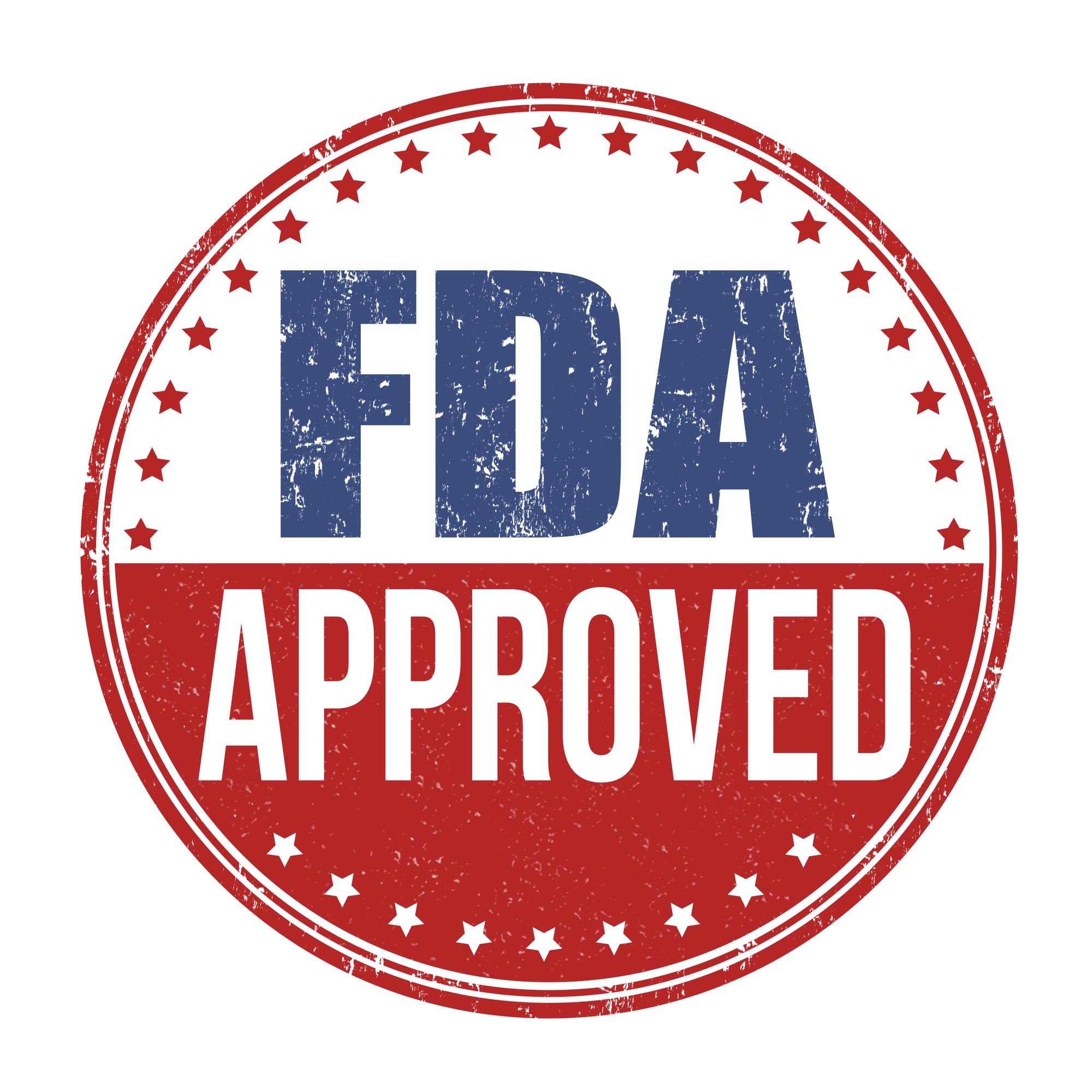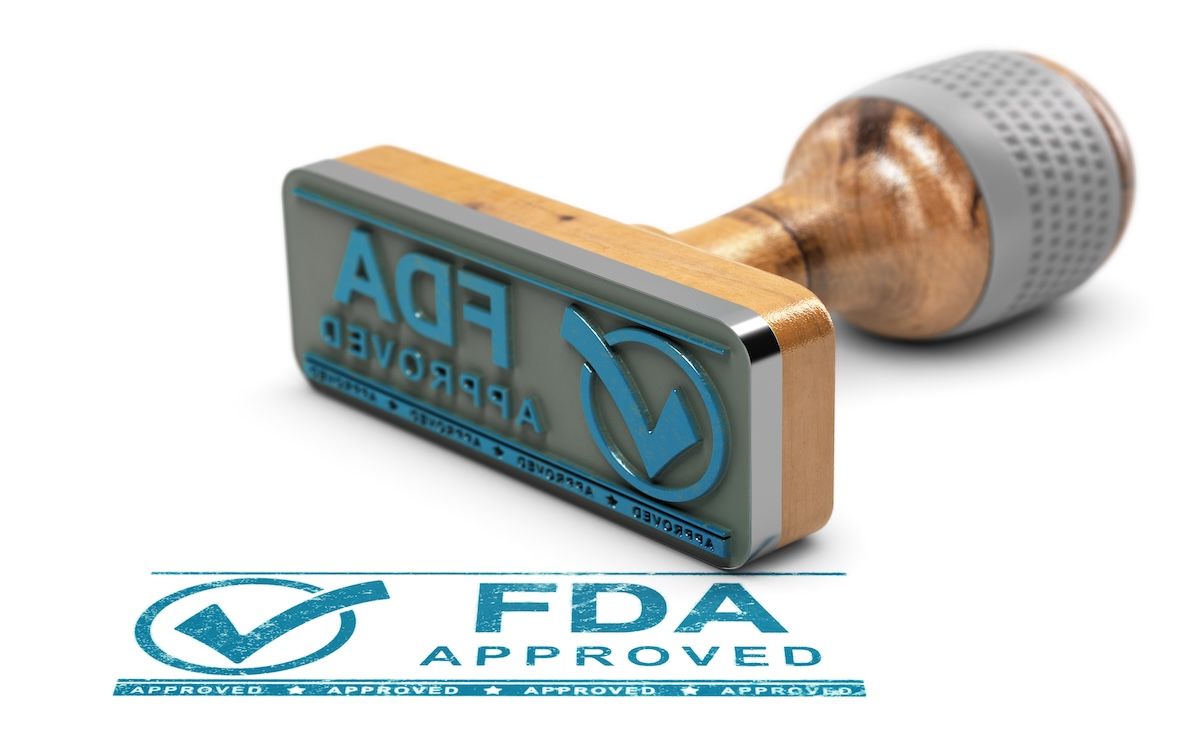News
Article
FDA Approves First Subcutaneous Apomorphine Device for Parkinson Disease
Author(s):
Key Takeaways
- Onapgo, a subcutaneous apomorphine infusion device, is approved for advanced Parkinson's disease, offering continuous symptom management without surgery.
- The TOLEDO trial showed apomorphine infusion significantly reduced "OFF" time by 1.89 hours daily compared to placebo.
The FDA has approved the first and only subcutaneous apomorphine infusion device, apomorphine hydrochloride injection (Onapgo), for the treatment of adults with advanced Parkinson disease.
The FDA has approved apomorphine hydrochloride injection (Onapgo), the first and only subcutaneous apomorphine infusion device for the treatment of advanced Parkinson disease.
Parkinson disease impacts both the central nervous system (including the brain and spinal cord) and the peripheral nervous system, which supports body functions such as digestion, respiration, heart function, and blood pressure. | Image credit: wladimir1804 - stock.adobe.com

The product, developed by Supernus Pharmaceuticals and formally known as SPN-830, is expected to make it’s US debut in the second quarter of 2025, with a support team of experts, including a nurse education program and an access support program.
Over 10 million worldwide—of whom about 1 million live in the US—are living with Parkinson disease, a progressive neurodegenerative disorder that affects movement and balance.2 Parkinson disease causes symptoms like tremors, muscle rigidity, and difficulty with motor control, and can also lead to dyskinesia—uncontrolled movements that disrupt daily activities.
The disease impacts both the central nervous system (including the brain and spinal cord) and the peripheral nervous system, which supports body functions such as digestion, respiration, heart function, and blood pressure. While there is no cure for Parkinson disease, treatments can help manage symptoms. Patients often experience "ON" time, when medications are effective, and "OFF" time, when symptoms return as oral levodopa becomes less effective.3 Parkinson disease is the second most common neurodegenerative disorder associated with aging and the most prevalent movement disorder.4
“Continuous subcutaneous apomorphine infusion already has a proven and established 30-year history in Europe, where it has helped deliver more consistent control of motor fluctuations for thousands of patients,” said Rajesh Pahwa, MD, Laverne and Joyce Rider professor of neurology at the University of Kansas School of Medicine, director of the Movement Disorder Program at The University of Kansas Health System, and a clinical trial investigator for Onapgo.1 “Today’s approval of Onapgo means patients in the U.S. who are not responding well to their current treatment regimen, including levodopa, will now have the option of using a small and lightweight wearable device to deliver a continuous infusion without the need for an invasive surgical procedure.”
The approval was based on data from the multicenter, double-blind, randomized, placebo-controlled TOLEDO trial (NCT02006121).5 The study aimed to evaluate the efficacy and safety of subcutaneous apomorphine infusion in patients with Parkinson disease experiencing persistent motor fluctuations despite optimized oral or transdermal treatment. Conducted across 23 European hospitals, 107 patients were enrolled. Over 12 weeks, patients received either apomorphine infusion or placebo. The primary endpoint was the change in daily off time, assessed through patient diaries.
Results showed that apomorphine infusion significantly reduced off time by 1.89 hours per day compared with placebo (−2.47 hours vs −0.58 hours, respectively). The treatment was generally well tolerated, with no unexpected safety concerns. However, 6 patients in the apomorphine group withdrew due to treatment-related adverse events. The study concluded that apomorphine infusion effectively reduces off time in patients with Parkinson disease, offering a clinically meaningful improvement.
“As the motor symptoms of Parkinson’s disease worsen over time, patients report alternating states between ON when their medication is working, and OFF when it’s not working optimally,” said Andrea Merriam, CEO of the Parkinson & Movement Disorder Alliance. “These on-again, off-again changes are disruptive and can happen at any time, which is why consistent daily control of OFF time is key to improving how patients feel and move. For many, continuous treatment options like Onapgo can help to make days with Parkinson’s more predictable.”
References
1. Supernus announces FDA approval of Onapgo™ (apomorphine hydrochloride) for Parkinson’s disease. Press release. Supernus Pharmaceuticals; February 4, 2025. Accessed February 4, 2025. https://ir.supernus.com/news-releases/news-release-details/supernus-announces-fda-approval-onapgotm-apomorphine
2. Peripheral neuropathy and Parkinson’s disease. American Parkinson Disease Association. 2020. Accessed February 4, 2025. https://www.apdaparkinson.org/article/peripheral-neuropathy-parkinsons-disease/
3. Isaacson S, Pagan F, Lew M, Pahwa R. Should “on-demand” treatments for Parkinson’s disease OFF episodes be used earlier? Clin Park Relat Disord. 2022:7:100161. doi:10.1016/j.prdoa.2022.100161
4. Mhyre TR, Boyd JT, Hamill RW, Maguire-Zeiss KA. Parkinson’s disease. Subcell Biochem. 2012;65:389-455. doi:10.1007/978-94-007-5416-4_16
5. Katzenschlager R, Poewe W, Rascol O, et al. Apomorphine subcutaneous infusion in patients with Parkinson's disease with persistent motor fluctuations (TOLEDO): a multicentre, double-blind, randomised, placebo-controlled trial. Lancet Neurol. 2018;17(9):749-759. doi:10.1016/S1474-4422(18)30239-4. 2018;17(9):749-759. doi:10.1016/S1474-4422(18)30239-4




